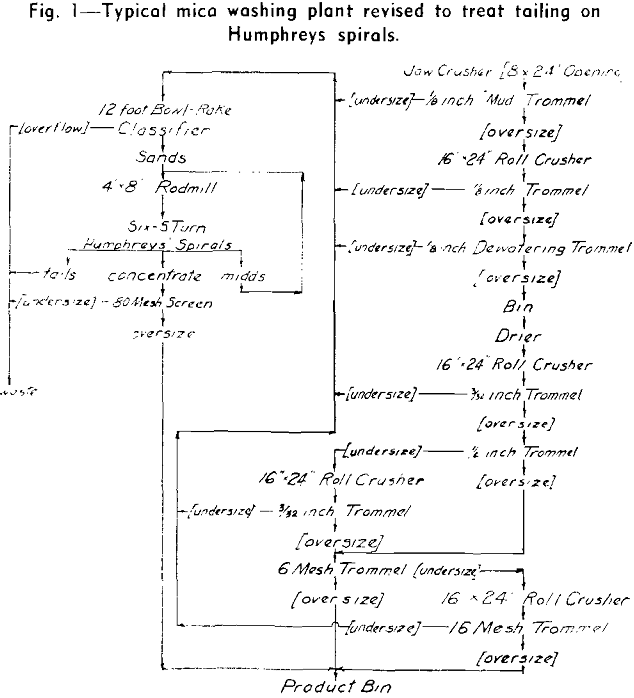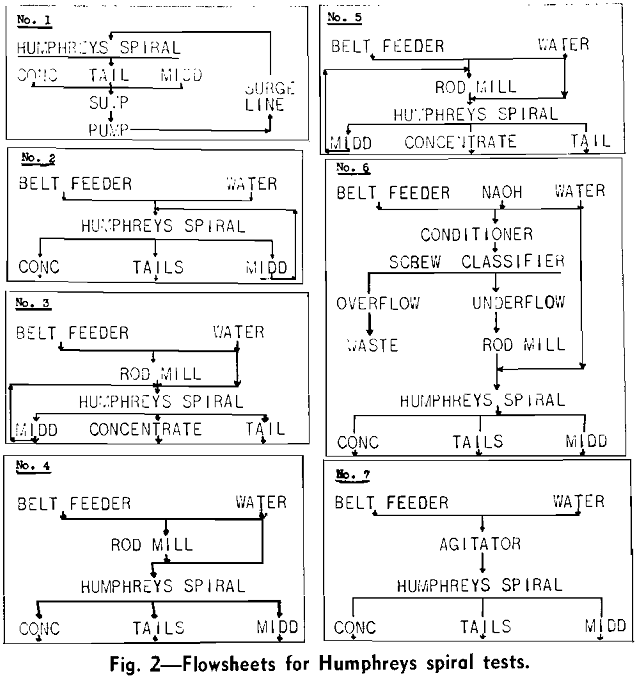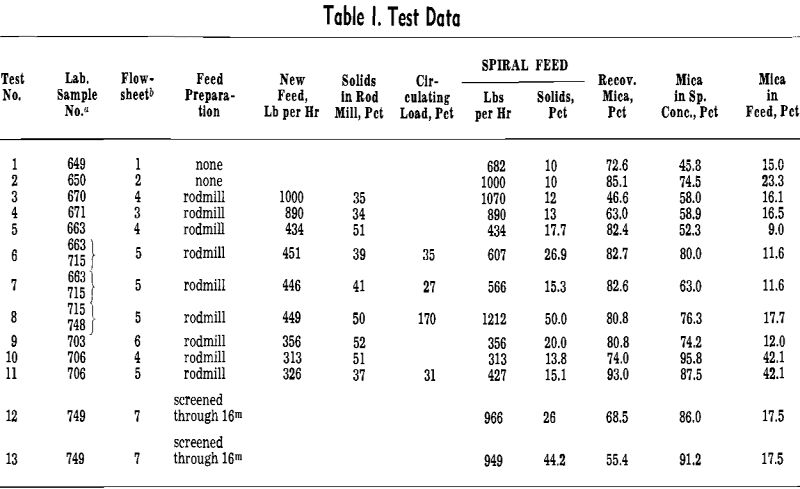A new method for concentrating the flake mica either from present washing plant tailings or from new feed has been developed. In this paper, flake mica refers to that which occurs in weathered granites, alaskites, pegmatites, and schists in a form too fine to be considered sheet mica. It ranges in size from 1 in. or more down to 200-mesh or finer and occurs with kaolin, quartz, and partially kaolinized feldspar. Scrap mica, a term often used indiscriminately to describe everything other than sheet mica, will be used to denote the waste product from sheet mica mines and fabricating plants.

North Carolina produces more flake mica than any other state, accounting for 73 pct of the total domestic production. In the following review of current practice in jig plants, there is no intention to disparage these operations. Within the limitations under which they were built, they are examples of mechanical ingenuity. The term jig plant is a carryover from early practice since there are no jigs in operation at the present time. Current practice is based on successive stages of differential crushing with rolls followed by trommel screens to remove the more easily crushed gangue minerals. The oversize mica product then is usually dried, and passed through another set of dry rolls and a final screen to remove the remainder of the grit.
Concentration By Humphreys Spiral
This separation is based on shape difference, whereby the thin flakes are carried to the outside of the stream and the more compact particles of gangue are drawn down the inner ports. Mica would move toward the ports were it not for the shape difference, since its specific gravity is slightly higher than that of the gangue.
The important variables tested were feed rate, percent solids in feed, amount and distribution of wash water, degree of grinding of the feed, and extent of middlings recirculation. 


Desliming of the feed ahead of the spiral is not essential but may be desirable in order to facilitate the setting of ports and wash water. Most of the slime accompanies the mica and must be removed at some point in the process. If desliming follows the spiral, slime and water may be removed at the same time on a fine mesh dewatering screen.
The mica concentrate from spiral operation invariably contains some fine sand and usually some clay slimes. Since this mica concentrate is very dilute (under 10 pct solids), some form of dewatering screen must be employed. The choice of mesh size for this screen is determined by the compromise between recovery and concentrate grade.
